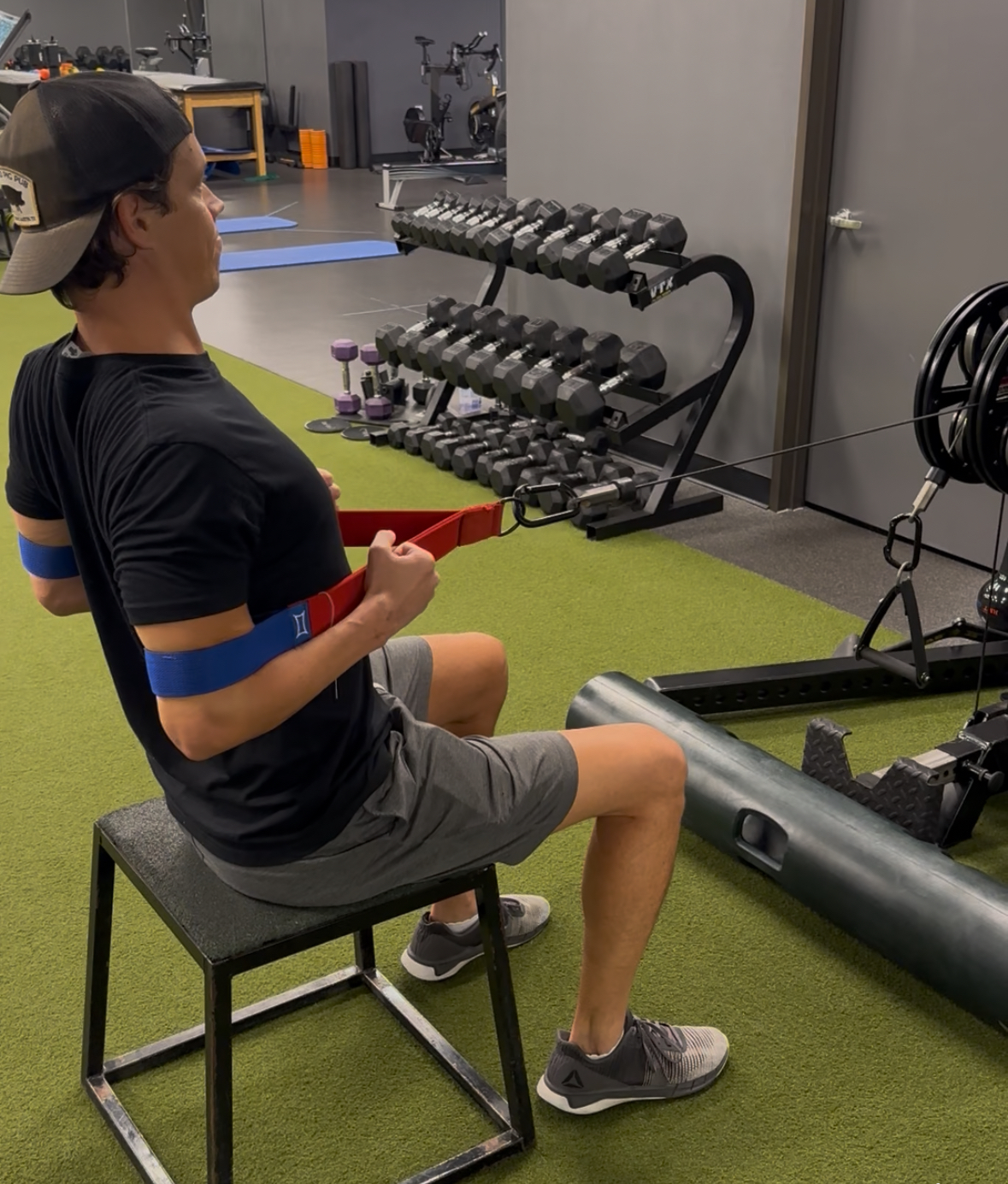August 26, 2025

Matt fractured the scaphoid bone in his right wrist on April 23rd of this year. It’s a tiny bone — but breaking it is a big deal. The scaphoid has poor blood supply and is notoriously slow to heal. So Matt underwent surgery later that month to repair it with a pin and a cast. The toughest part? Twelve weeks of no loading. That’s a daunting prospect for a healthy, athletic dad with three active kids.
That kind of restriction could have easily derailed his training — and honestly, no one would’ve blamed him for hitting pause. But instead, Matt and his entire care team focused on what he could do. The result? A clean X-ray at 12 weeks, and a body that was strong, stable, and fully prepared for a smooth transition back to loading the wrist and rebuilding its capacity.
His surgeon did excellent work on the repair, and he was able to get access to a bone stimulator to support healing. Toward the end of the process, he had a couple of sessions with a physical therapist who confirmed what we were already seeing — he was moving well, feeling strong, and likely didn’t need much formal rehab. And twice a week, Matt trained with me. We focused on legs and core, and used blood flow restriction and e-stim to help maintain upper body muscle. No pushing through pain. No risky movements. Just consistent, thoughtful work to keep the rest of his body from falling behind.
But this wasn’t just about preserving strength — it was about helping him stay healthy in every sense. Matt had built solid momentum in his training before the injury, and there was no reason to lose it just because one area had to rest. Keeping the rest of his body active supported not only his physical health, but also his sleep, stress levels, and mindset throughout recovery.
We talk a lot about the difference between athlete mode and patient mode. Athlete mode is about actively working toward a goal — doing what you can with what you’ve got. Patient mode is more passive. It’s easy to slip into a feeling of weakness or incapacity. Staying in athlete mode — even with big limitations — makes a huge difference in how someone feels during the process.
That’s the part that often gets overlooked. When one joint is off-limits, people assume they’re supposed to stop everything. But when you stop moving completely, the rest of the body starts to decondition — fast. Muscles atrophy, movement patterns break down, and the nervous system becomes less efficient at controlling strength and stability. You don’t just lose capacity in the injured area — you lose it everywhere. And that matters when the brace comes off and it’s time to move beyond the cast and start rebuilding strength in the wrist.
The stronger your surrounding systems are — shoulder, elbow, trunk, even your legs — the more support that healing joint has during every rep, reach, or return to sport. Matt didn’t have to fight his way back from zero. He stayed in the game the whole time. So when the wrist was ready, he was too.
Not every injury allows for this kind of training — and not every person is in the right headspace for it. But if you’re healthy in every other way and have access to a team who understands how to keep you moving safely, that choice often determines how well — and how quickly — someone comes back.
Rehab doesn’t start when the cast comes off. It starts the moment you ask, “What can I still do?”